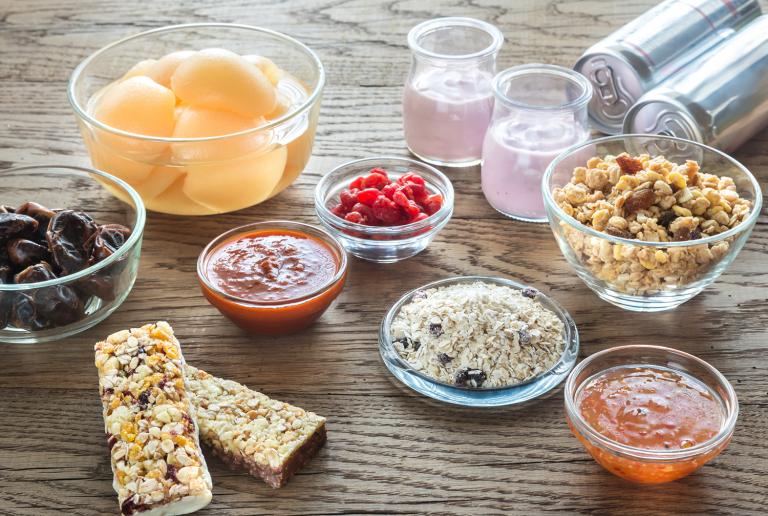Studies have shown that when consumed in excess quantities, sugar can lead to obesity, Type 2 diabetes, and heart disease. No one wants to see that kind of prognosis, but who doesn’t want to enjoy the occasional pumpkin-spice latte or slice of birthday cake?
Finding Added Sugars in Common Foods
It helps to know where sugar is hidden. The top sources of sugar in an average diet are soft drinks, fruit drinks, cereals, cookies, cakes, candy, and most processed foods. Some people have the willpower to minimize servings of that stuff or abstain for long stretches. But what’s concerning about the perils of sugar is that it’s not just the obvious treats that pack a punch of the sweet stuff. Added sugars are found in foods most people wouldn’t view as sweetened, staples such as soups, yogurts, bread, cured meats, and ketchup.
People think they’re eating and drinking relatively healthy foods and drinks—especially if they’re staying away from ice cream—but they’re probably still consuming added sugars that will affect health, today and tomorrow.
Know Your Daily Recommended Sugar Intake Numbers
The American Heart Association (AHA) recommends limiting the amount of added sugars to no more than half of your daily discretionary calories allowance. For most women, that means no more than 100 calories per day, or about 6 teaspoons of sugar. For men, it’s 150 calories per day, or about 9 teaspoons.
Nutritional Facts Labels & Sugar
It’s important, for good health’s sake, to have an idea of the sugar you consume. Get in the habit of looking at the “Nutrition Facts” panel on food and drink packaging to see the amount of natural sugar as well as the amount and type of added sugars. As AHA advises, sugar has many names, including maltose, sucrose, high fructose corn syrup, molasses, cane sugar, corn sweetener, raw sugar, syrup, honey, and fruit juice concentrates.
There are four calories in one gram of sugar. To pick on a popular soda that comes in a 12-ounce red can, that amounts to 39 grams of sugar in one soda, which contribute 156 additional calories. But it’s easy to pick on soda, so consider the added sugar in what is widely viewed as a healthy food: yogurt. Flavored yogurts typically have about 24 grams of sugar in a six-ounce serving, carrying 96 additional calories. It’s no wonder obesity, diabetes, and heart disease are byproducts of excessive sugar consumption.
Tips for Reducing Sugar Intake
To start reducing sugars, consider taking several steps, either immediately or as quickly as your palate allows:
- Reduce your use of table sugar, not just the powdered stuff but also honey, molasses, and maple syrup.
- Reduce sugar servings when baking sweets. Try reducing the sugar in a recipe by one-third or one-half. You probably won’t notice the reduction. Also, consider extracts such as almond, lemon, orange, and vanilla for flavor.
- Eliminate soda.
- Spice it up! Sprinkle allspice, cinnamon, ginger, and nutmeg on foods.
- Make sure the packaged foods you purchase are unsweetened. Choose unsweetened varieties of almond milk, coconut flakes, and cranberry juice, for example.
With holiday season coming, it can be tough to resist sweets. But monitoring your daily sugar intake and taking steps toward reducing it will go a long way toward bringing good health. Eventually, you won’t miss sugar, and your body will thank you

